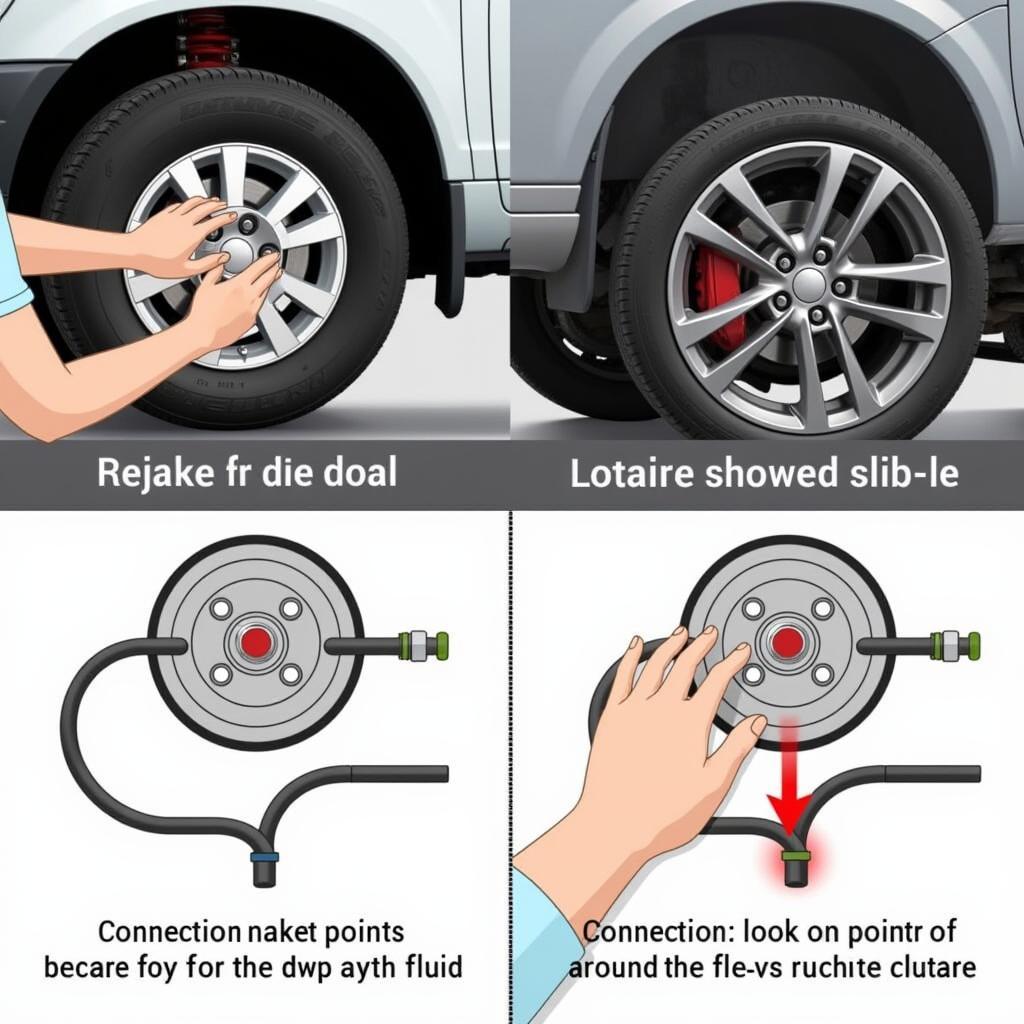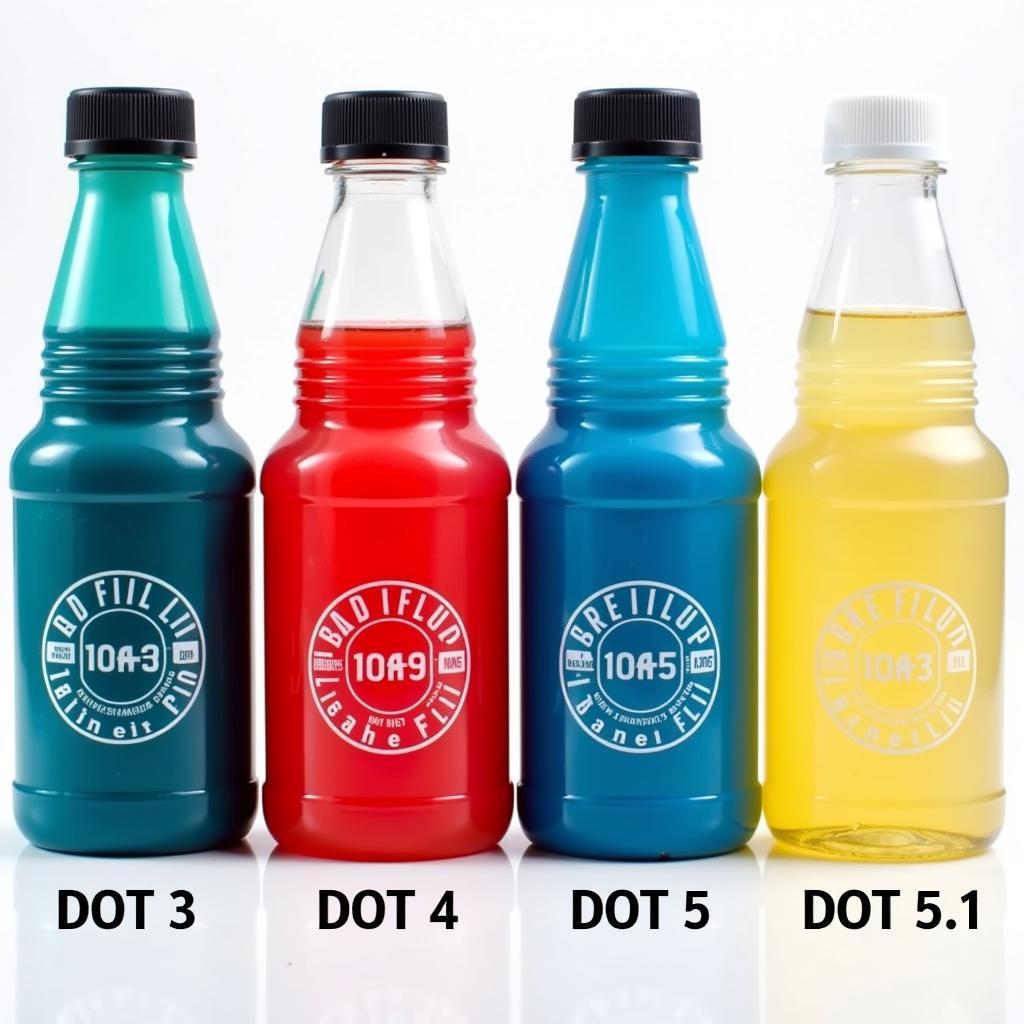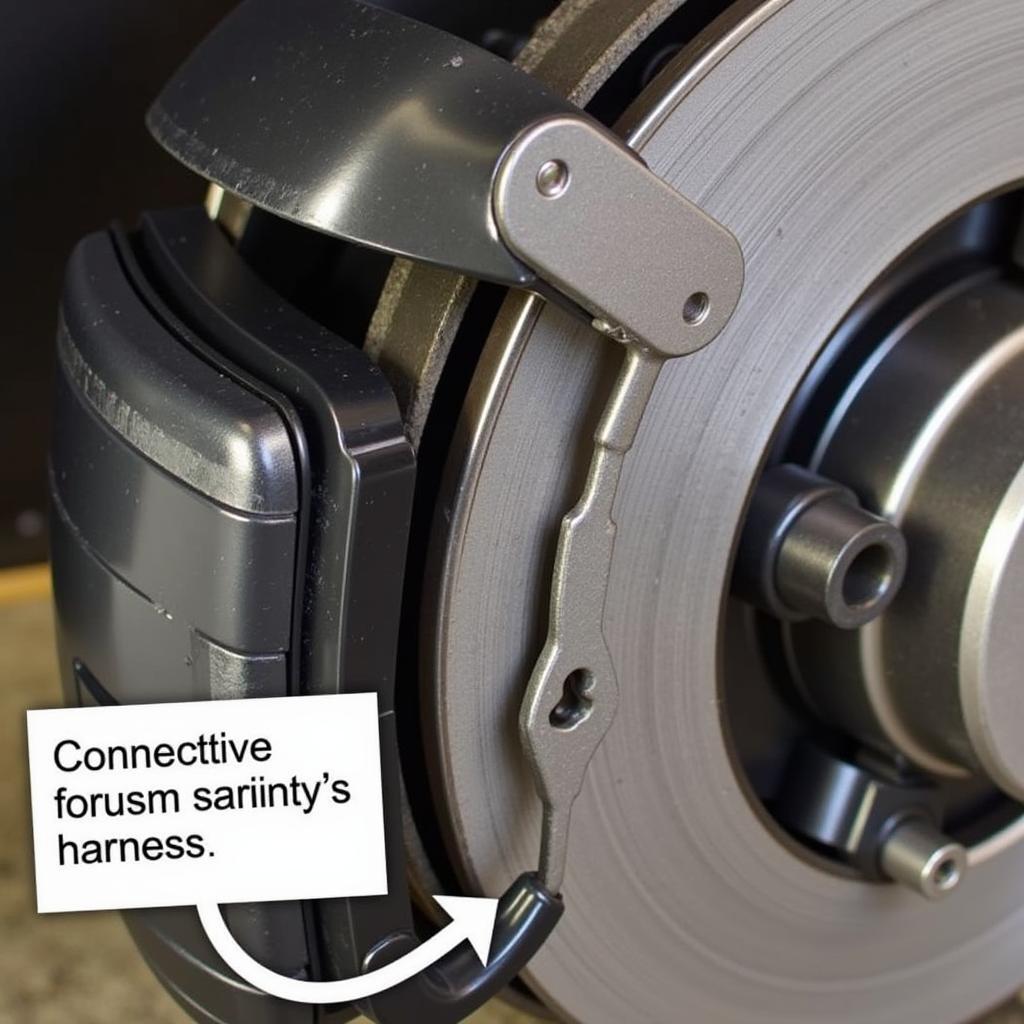The brake fluid warning label on your dashboard might seem like just another car symbol, but it’s crucial for your safety. This warning, often appearing as a circled exclamation mark within parentheses and accompanied by the word “BRAKE,” indicates a potential issue with your braking system. Ignoring it can have serious consequences. This article delves into the importance of this warning label, what triggers it, and the steps you can take to address the underlying issue.
One of the most common reasons for a brake fluid warning label to illuminate is low brake fluid. 2012 f250 brake fluid low warning af can be a serious issue. Because your braking system relies on hydraulic pressure to function correctly, even a small leak can significantly reduce braking efficiency, putting you at risk.
Why is Brake Fluid Important?
Your car’s braking system is essentially a hydraulic system that uses brake fluid to transmit force from the brake pedal to the wheels, ultimately stopping your vehicle. This fluid is incompressible, meaning it doesn’t change volume under pressure. When you press the brake pedal, this pressure is transferred through the brake lines to the calipers or wheel cylinders, forcing the brake pads or shoes against the rotors or drums, resulting in the friction needed to slow down or stop your vehicle.
Common Reasons for a Brake Fluid Warning Light
1. Low Brake Fluid Level: This is the most frequent culprit. Over time, brake fluid levels naturally decrease as your brake pads wear down. However, a sudden drop in fluid level often indicates a leak, which requires immediate attention.
2. Worn Brake Pads: As mentioned earlier, worn brake pads can indirectly trigger the warning light. As the pads thin, the brake calipers need to extend further to engage the rotors, requiring more brake fluid and potentially triggering the warning light.
3. Brake Fluid Leak: A leak in the brake lines, hoses, calipers, or wheel cylinders can lead to a rapid loss of brake fluid, compromising your ability to stop safely. If you notice a puddle of fluid under your car, particularly if it’s yellowish and has an oily consistency, it’s likely a brake fluid leak.
4. Faulty Brake Fluid Level Sensor: Like any sensor, the brake fluid level sensor can malfunction, illuminating the warning light even when the fluid level is sufficient. A faulty sensor may require replacement.
What to Do When Your Brake Fluid Warning Light Turns On
1. Check Your Brake Fluid Level: Park your car on a level surface, turn off the engine, and carefully open the hood. Locate the brake fluid reservoir, usually a translucent plastic container with a black cap labeled “Brake Fluid.” Check the fluid level against the minimum and maximum markings on the reservoir.
2. Add Brake Fluid (If Necessary): If the fluid level is low, carefully add the correct type of brake fluid recommended in your car’s owner’s manual. Avoid overfilling, as this can cause problems.
3. Inspect for Leaks: Look for signs of leaks around the brake lines, hoses, calipers, and wheel cylinders. If you detect a leak, it’s crucial to have your car towed to a mechanic immediately.
4. Seek Professional Help: If the brake fluid level is consistently low, you suspect a leak, or the warning light remains on even after adding fluid, it’s essential to seek professional help.
 brake fluid leak detection
brake fluid leak detection
Can I Still Drive with the Brake Fluid Warning Light On?
Driving with an illuminated brake fluid warning light is highly discouraged and potentially dangerous. If the light comes on while driving, pull over as soon as it’s safe to do so and assess the situation. If you suspect a leak or the brake pedal feels spongy or unresponsive, it’s safest to have your car towed to a mechanic.
Preventive Measures
Regular vehicle maintenance is crucial for preventing brake fluid issues. Here are some preventive measures:
- Regular Brake Inspections: Have your brakes inspected by a qualified mechanic at least once a year or as recommended in your car’s owner’s manual.
- Timely Brake Pad Replacement: Replace your brake pads before they wear down completely to avoid damaging the rotors and potentially triggering the brake fluid warning light.
- Brake Fluid Flush: Have your brake fluid flushed and replaced according to the manufacturer’s recommended intervals. Over time, brake fluid can absorb moisture, reducing its effectiveness and potentially damaging brake components.
Understanding the Different Types of Brake Fluid
Not all brake fluids are created equal. Using the wrong type can damage your braking system. Here’s a quick rundown:
- DOT 3: Glycol-based, suitable for most vehicles with disc/drum brake systems.
- DOT 4: Similar to DOT 3 but with a higher boiling point, offering better performance under high temperatures.
- DOT 5: Silicone-based, not compatible with other brake fluids and typically used in high-performance or classic cars.
- DOT 5.1: Glycol-based, not interchangeable with DOT 5, designed for high-performance vehicles with ABS.
Always refer to your owner’s manual or consult a mechanic to determine the correct type of brake fluid for your vehicle.
 different types of brake fluid
different types of brake fluid
Conclusion
The brake fluid warning label is not something to ignore. It’s a critical safety feature that alerts you to potential problems with your braking system. By understanding the causes behind this warning light and taking prompt action, you can ensure your safety on the road. Remember, regular maintenance and timely repairs are crucial for keeping your brakes in optimal condition.
FAQs about Brake Fluid Warning Labels
1. Can a faulty brake light switch trigger the brake fluid warning light?
While a faulty brake light switch might prevent your brake lights from illuminating, it generally doesn’t directly trigger the brake fluid warning light. These are separate systems.
2. How often should I check my brake fluid level?
It’s a good practice to check your brake fluid level at least once a month and more frequently if you notice any changes in your brake pedal feel or hear unusual noises while braking.
3. Is it expensive to fix a brake fluid leak?
The cost of repairing a brake fluid leak can vary depending on the severity and location of the leak. A minor leak in a brake hose might be relatively inexpensive to fix, while a leak in the master cylinder could be more costly.
4. Can I top off my brake fluid with any type of brake fluid?
No, it’s crucial to use the correct type of brake fluid recommended in your car’s owner’s manual. Using the wrong type can damage your braking system and compromise its effectiveness.
5. How long can I drive with a brake fluid leak?
Driving with a brake fluid leak is highly discouraged and potentially extremely dangerous. If you suspect a leak, it’s best to have your car towed to a mechanic immediately.
6. Can I add brake fluid myself?
Yes, you can add brake fluid yourself if you’re comfortable doing so. However, if you’re unsure about the process or notice a persistent leak, it’s always best to seek professional help.
7. Is it normal for my brake fluid level to drop slightly over time?
Yes, it’s normal for brake fluid levels to decrease gradually as your brake pads wear down. However, a sudden or significant drop often indicates a leak that needs immediate attention.

